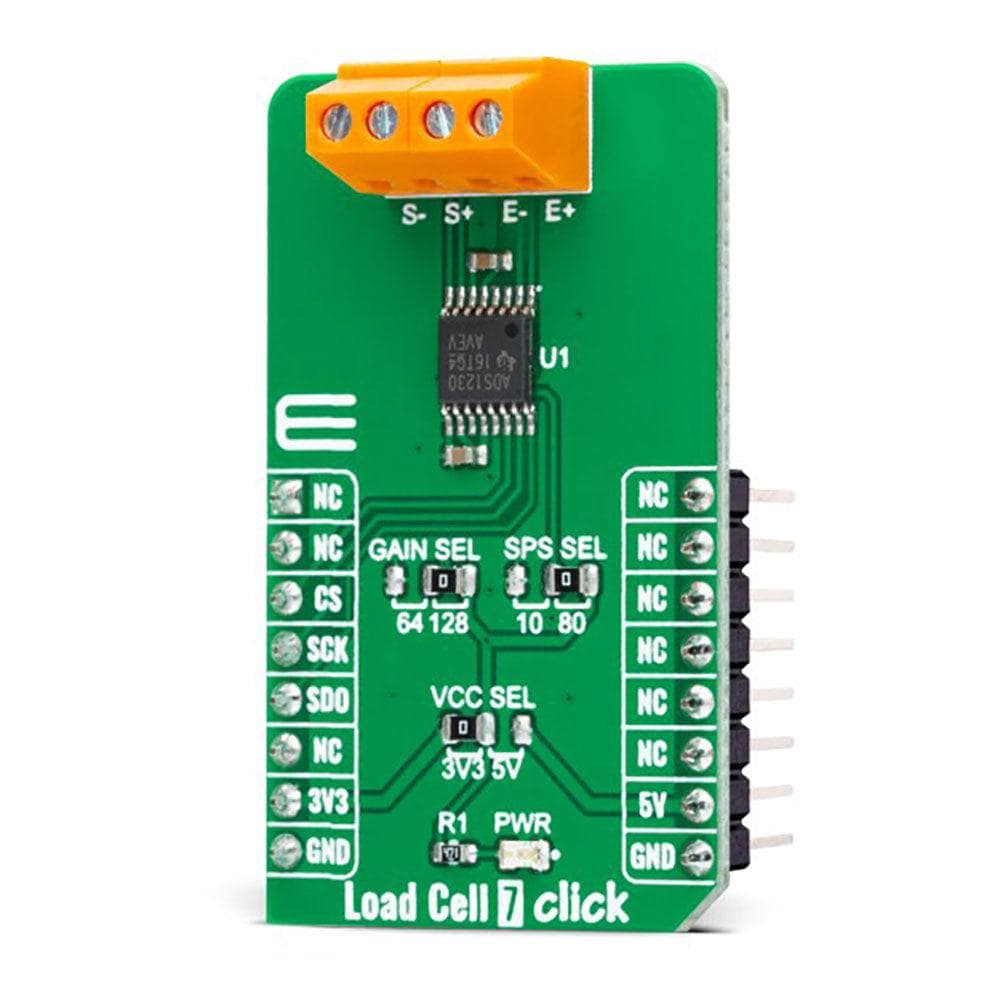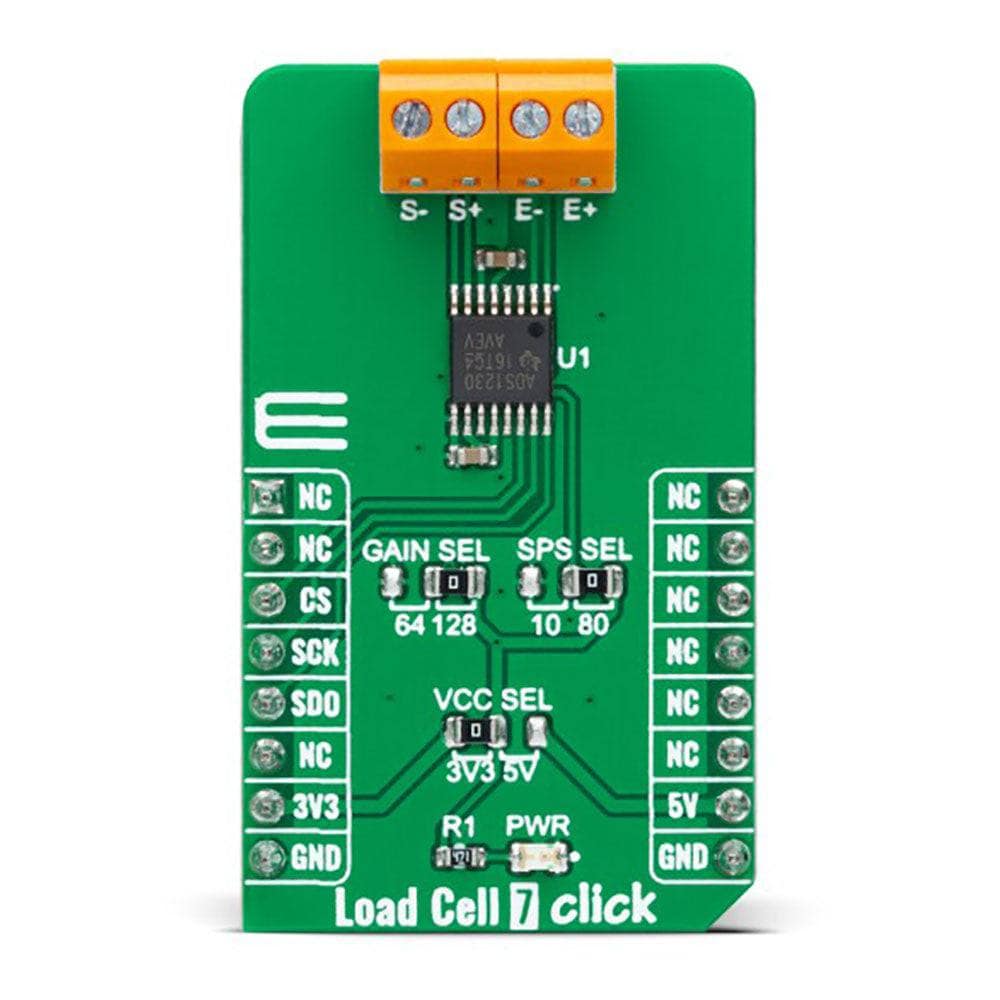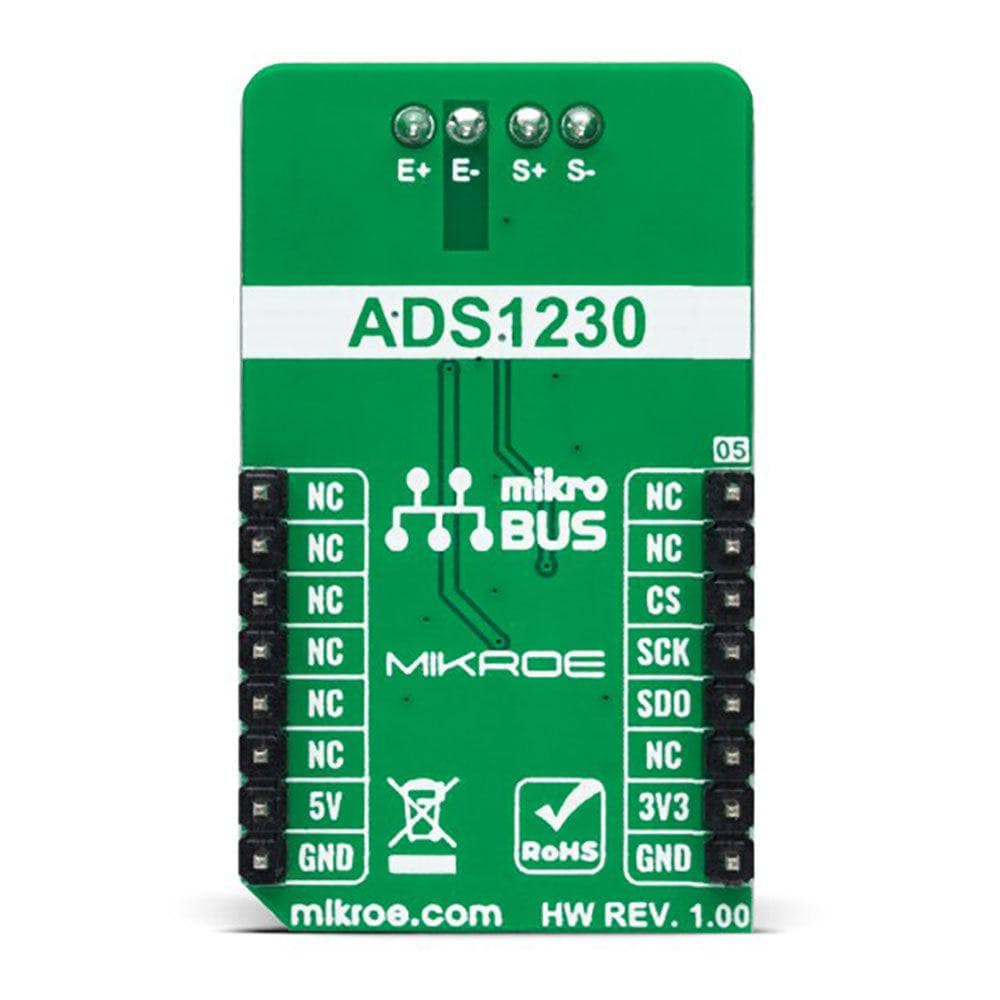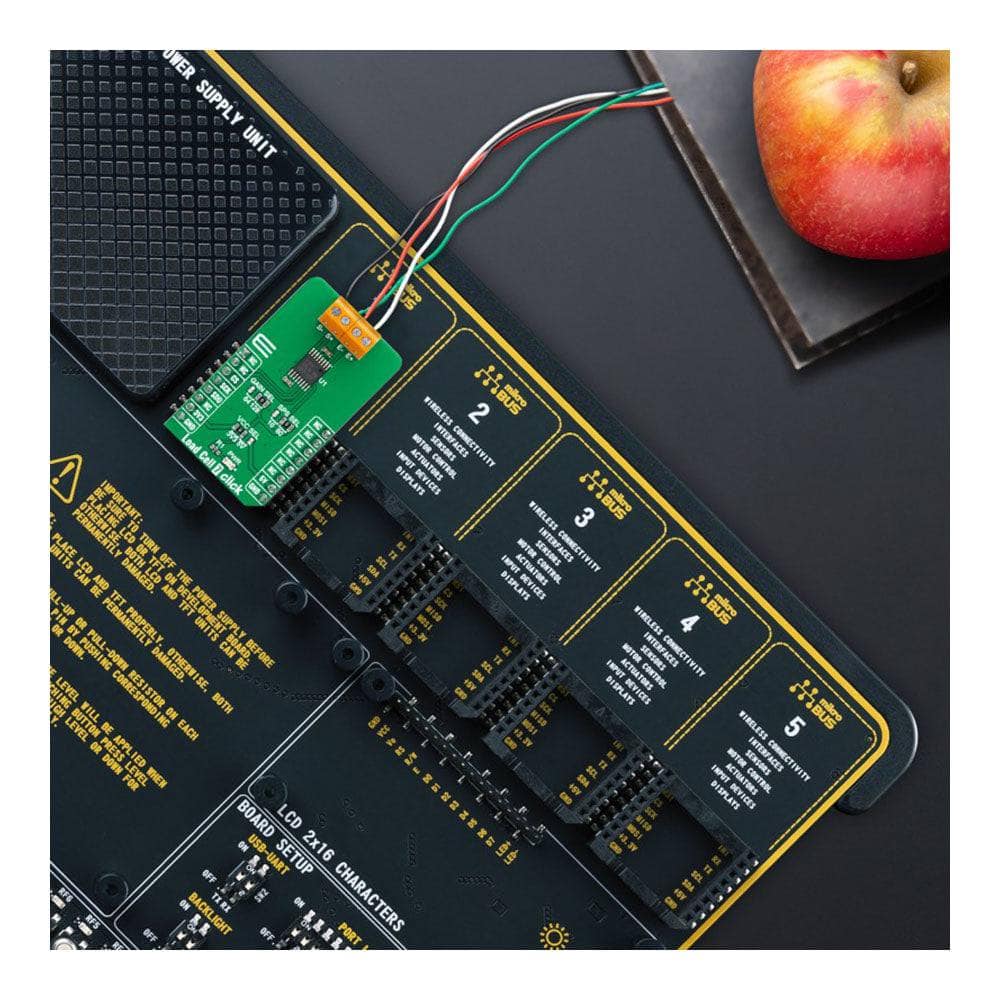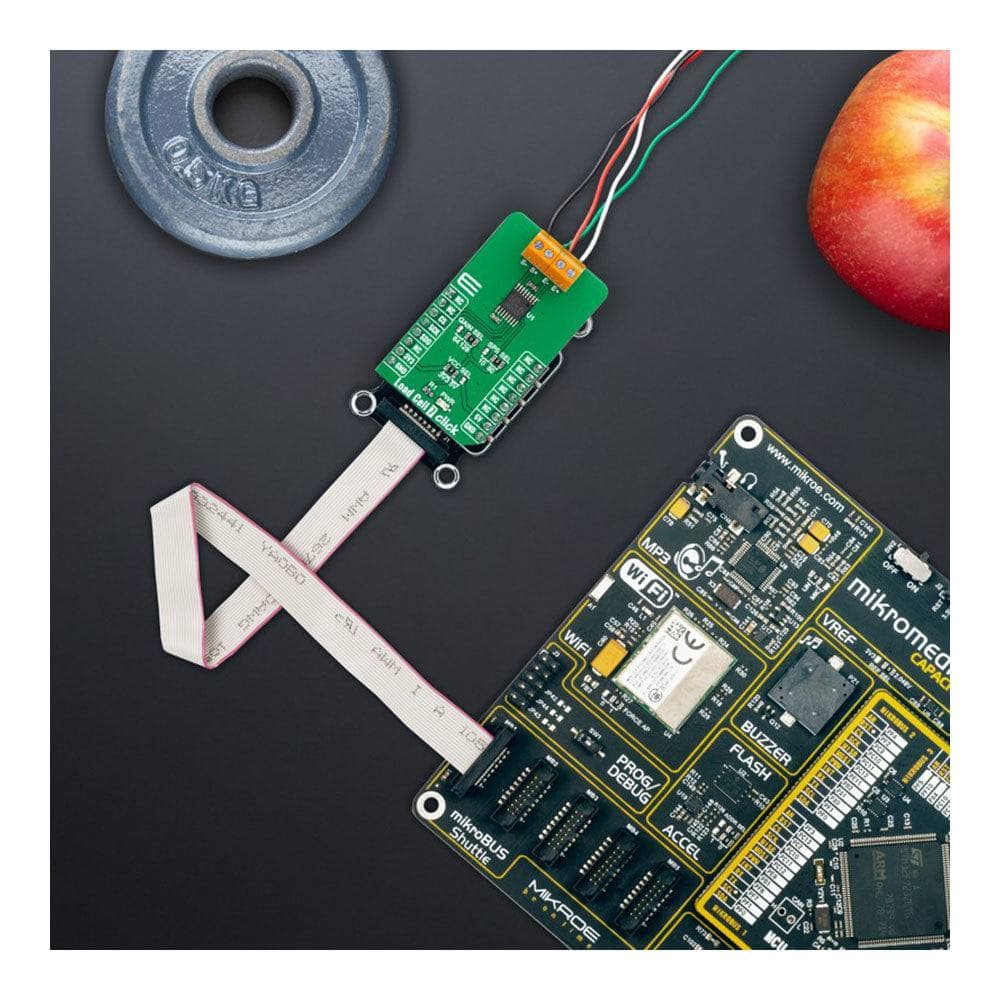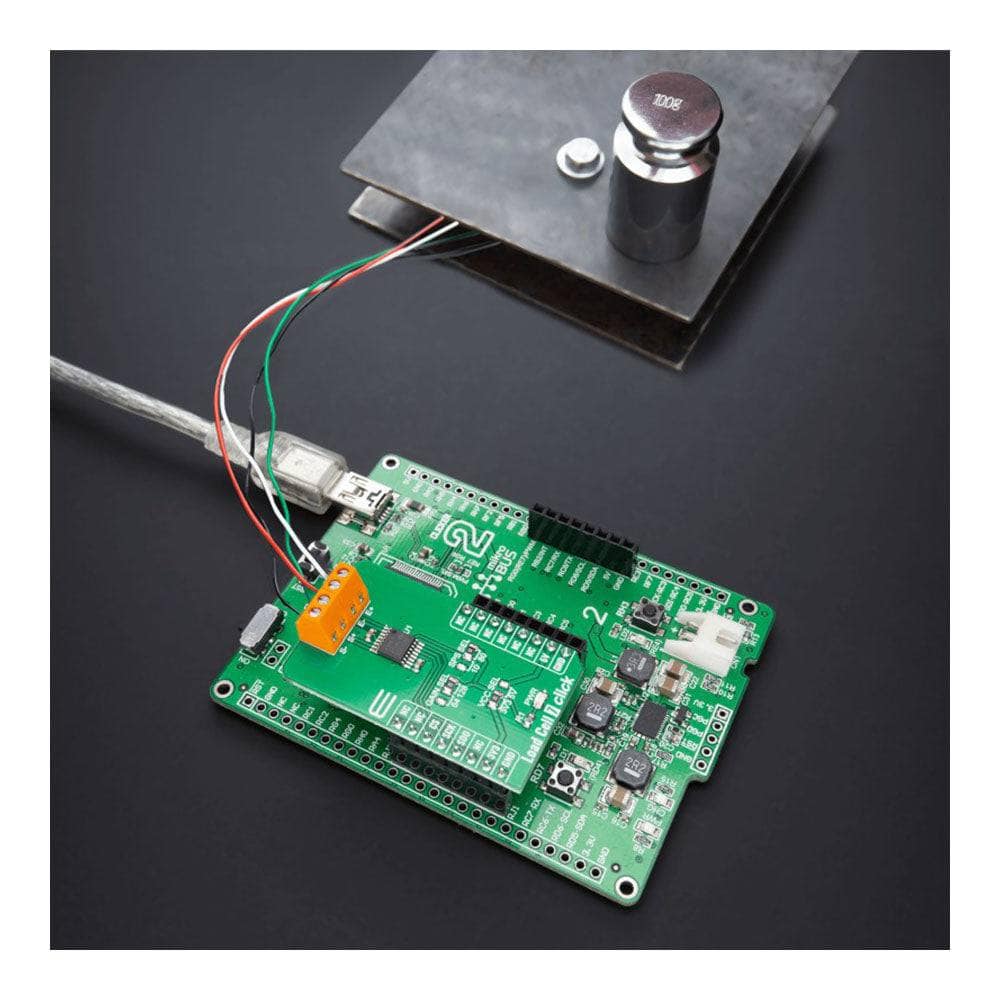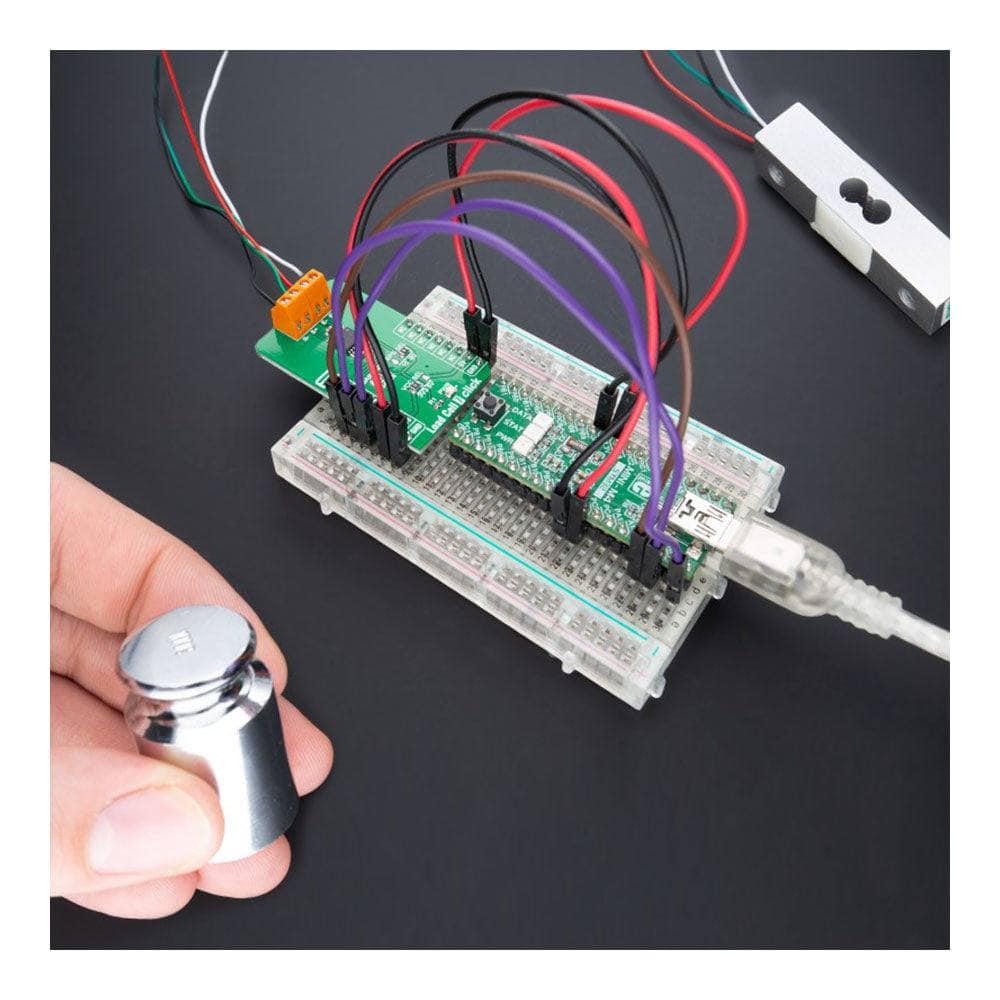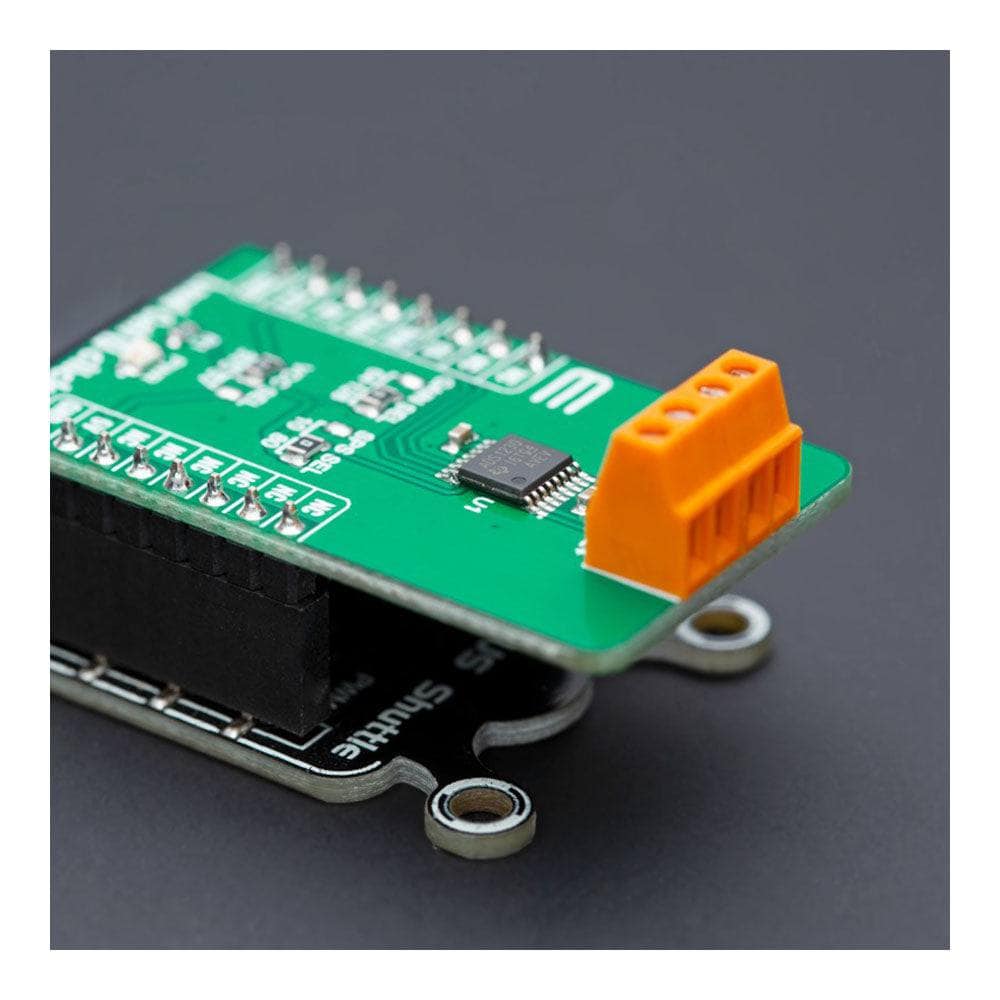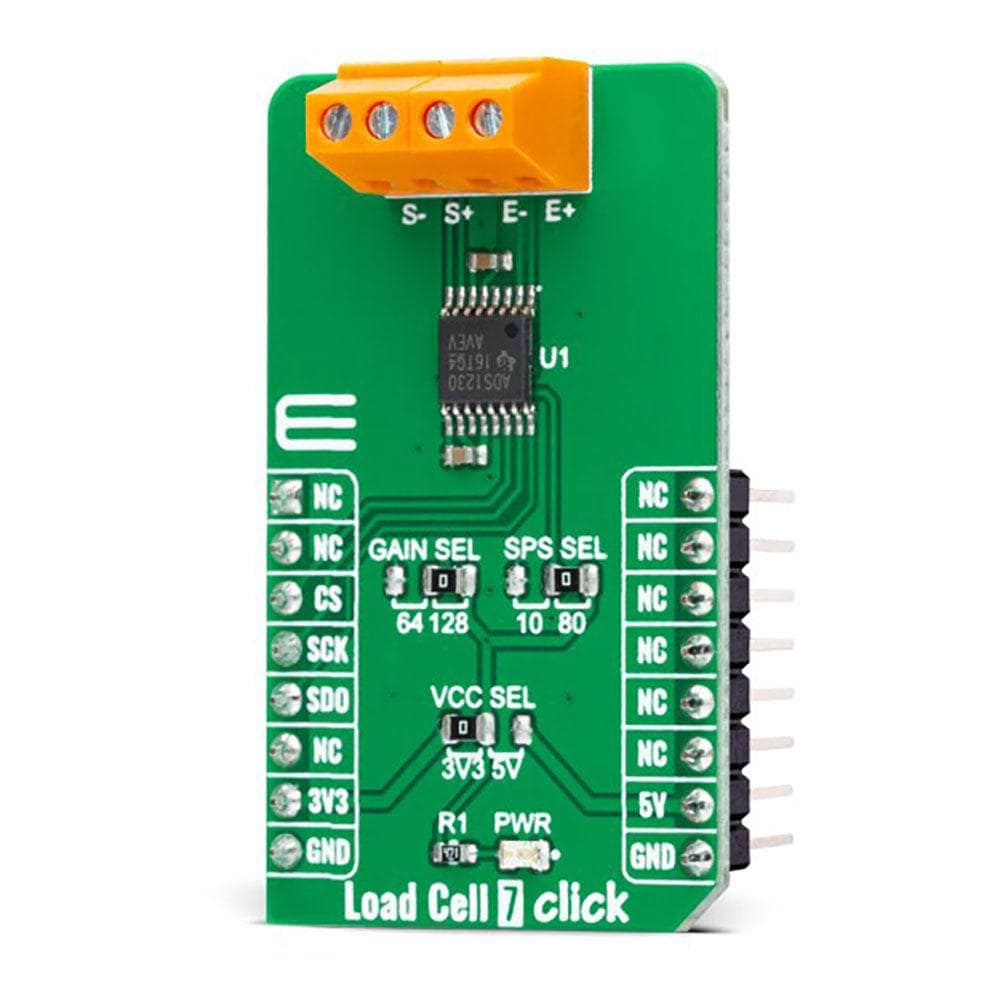
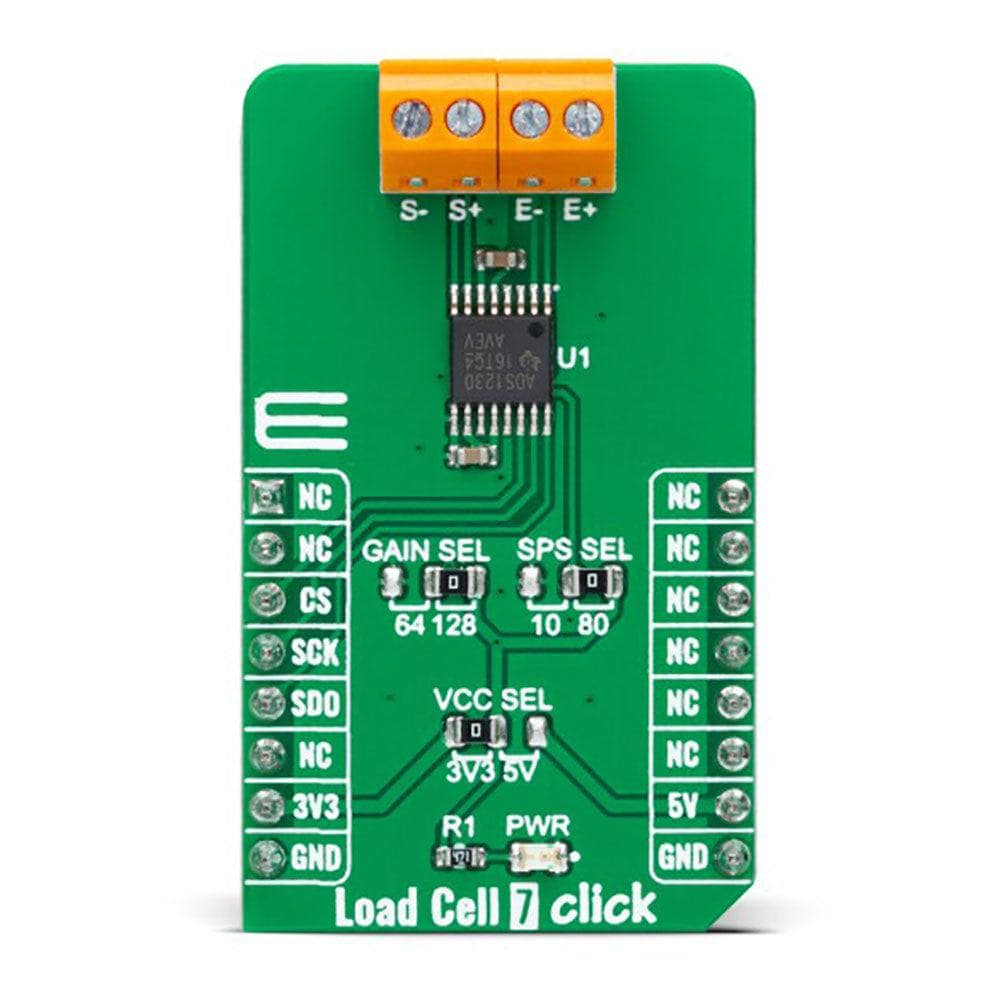
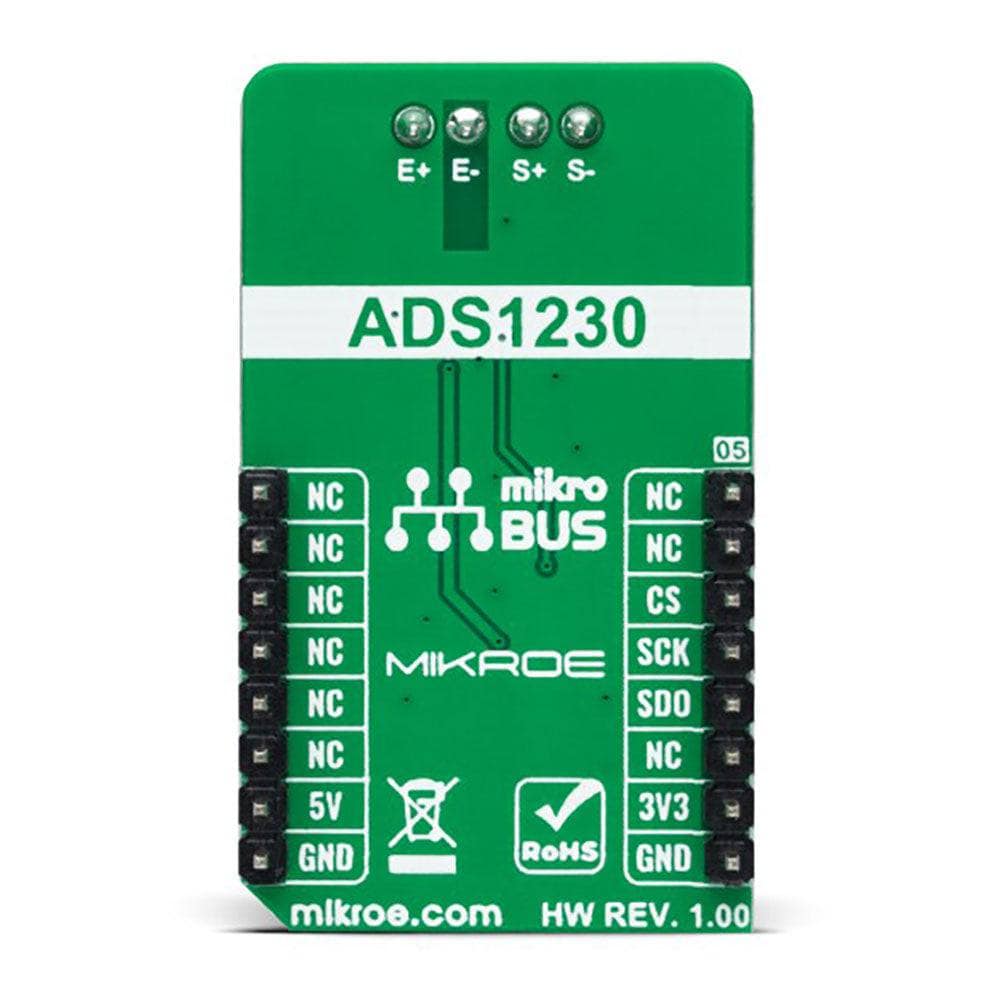
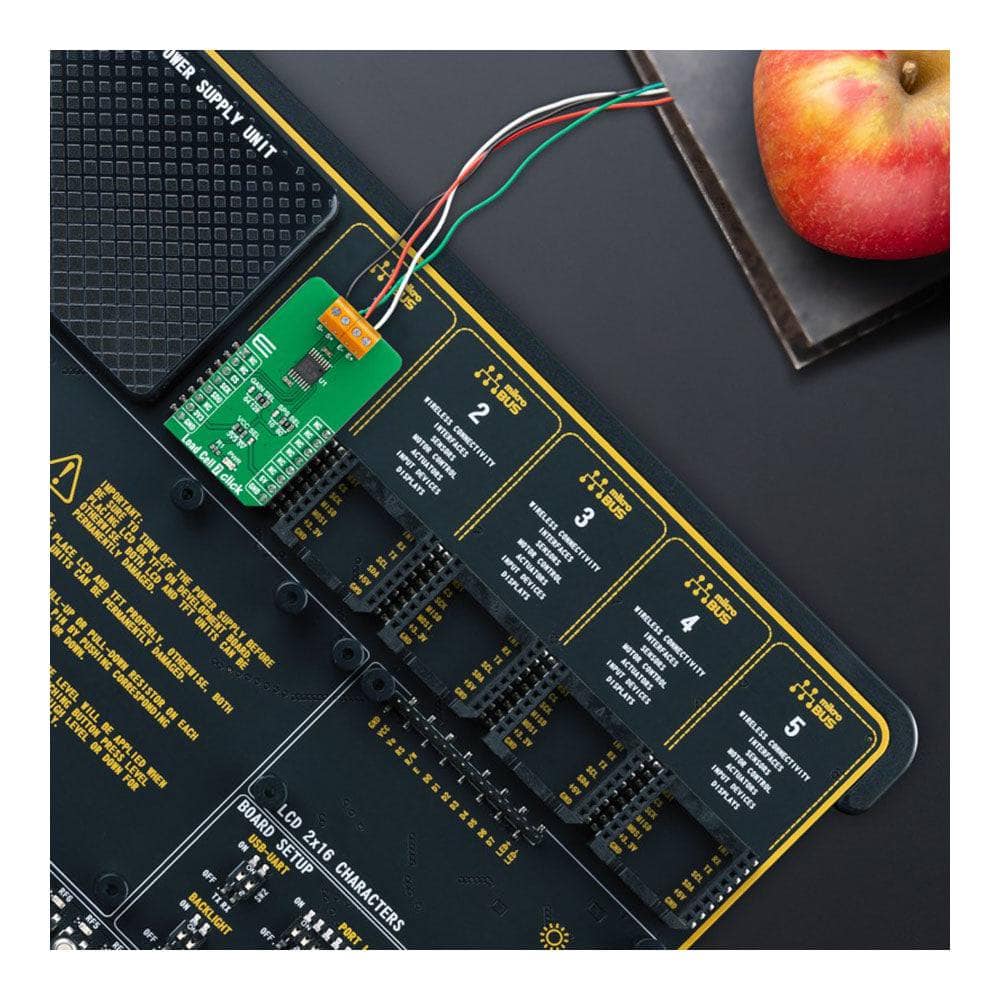
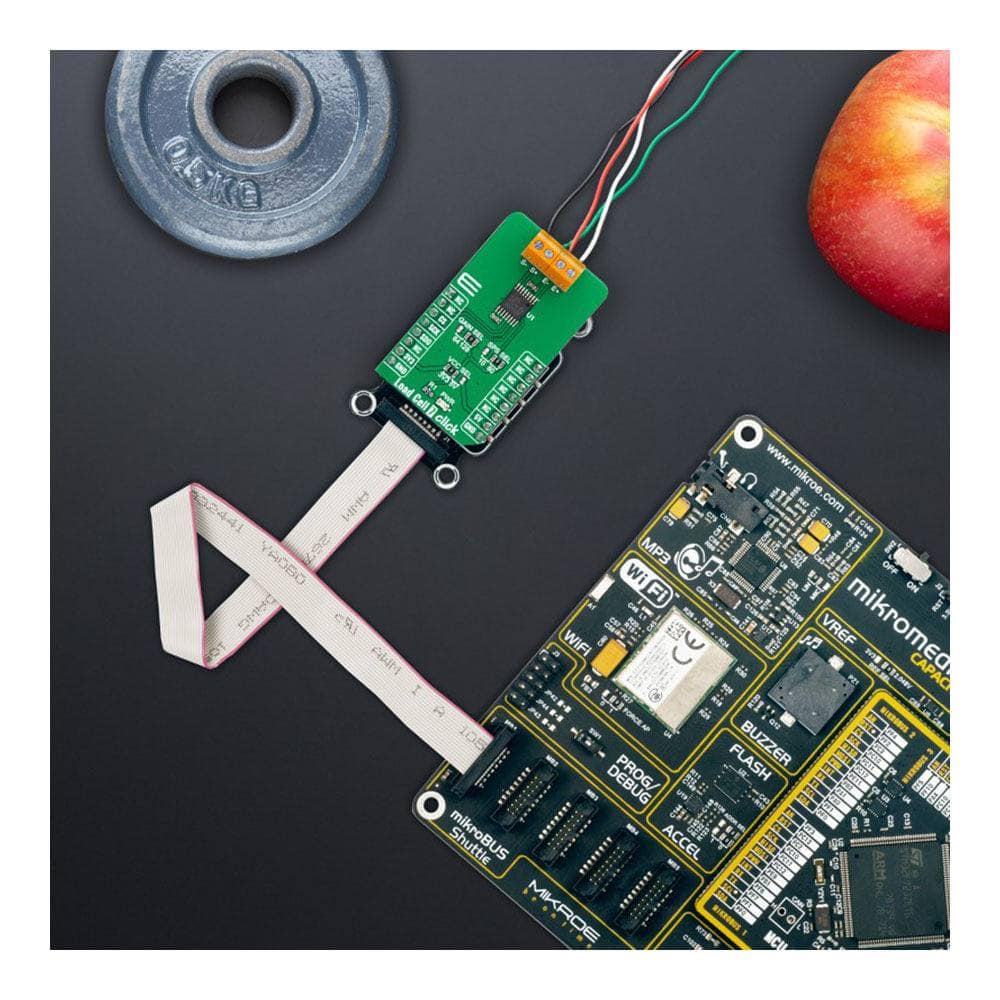
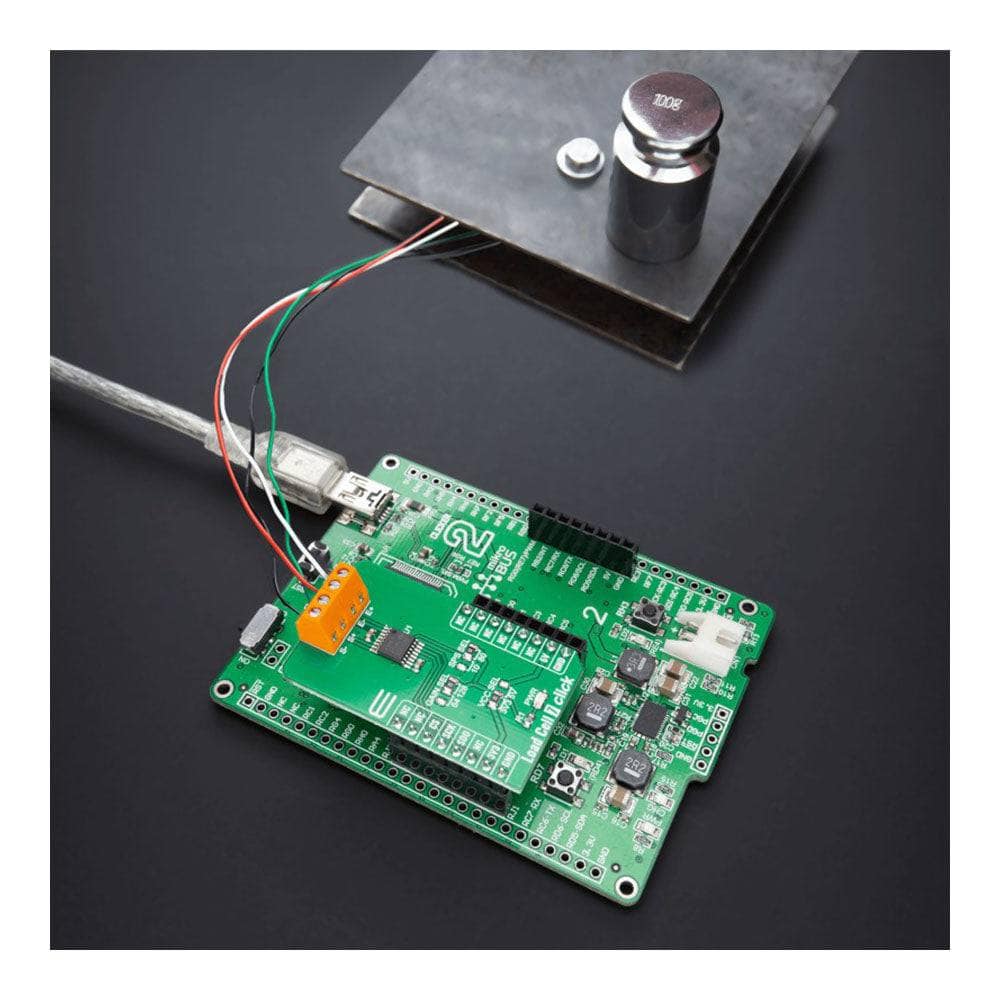
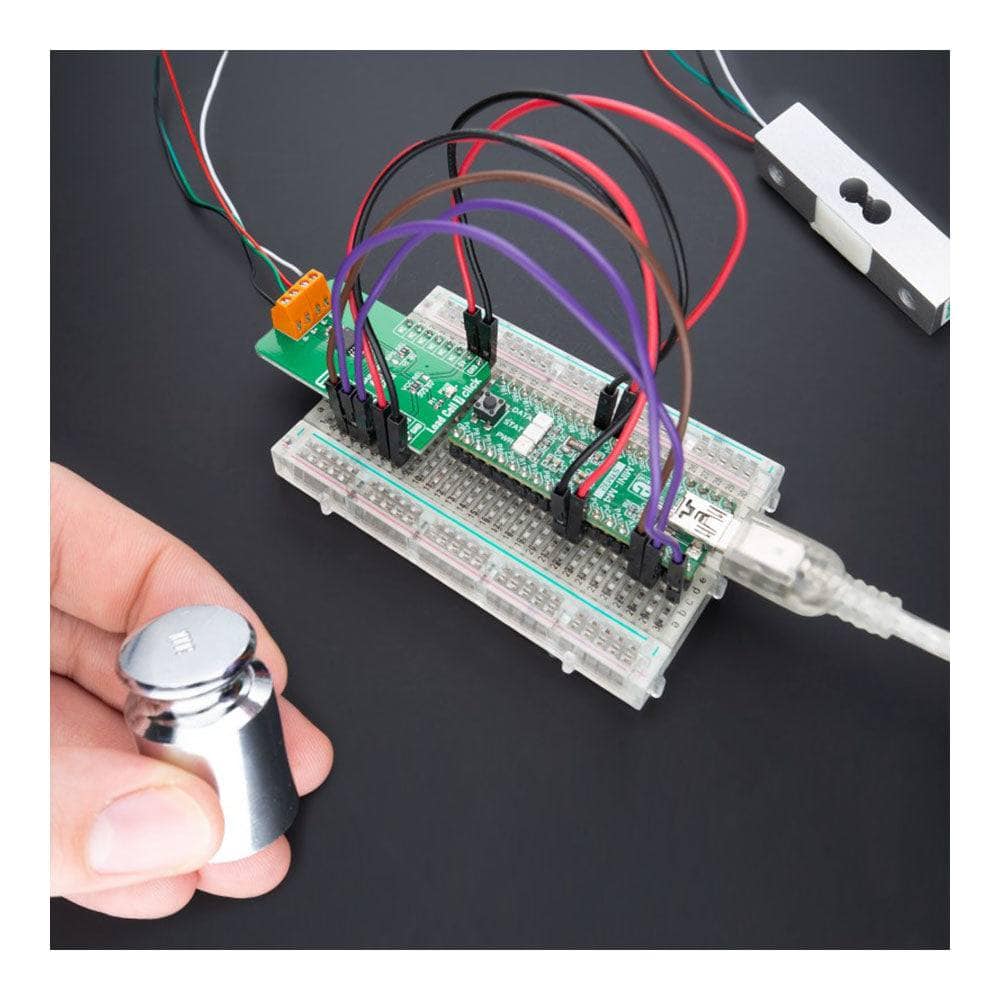
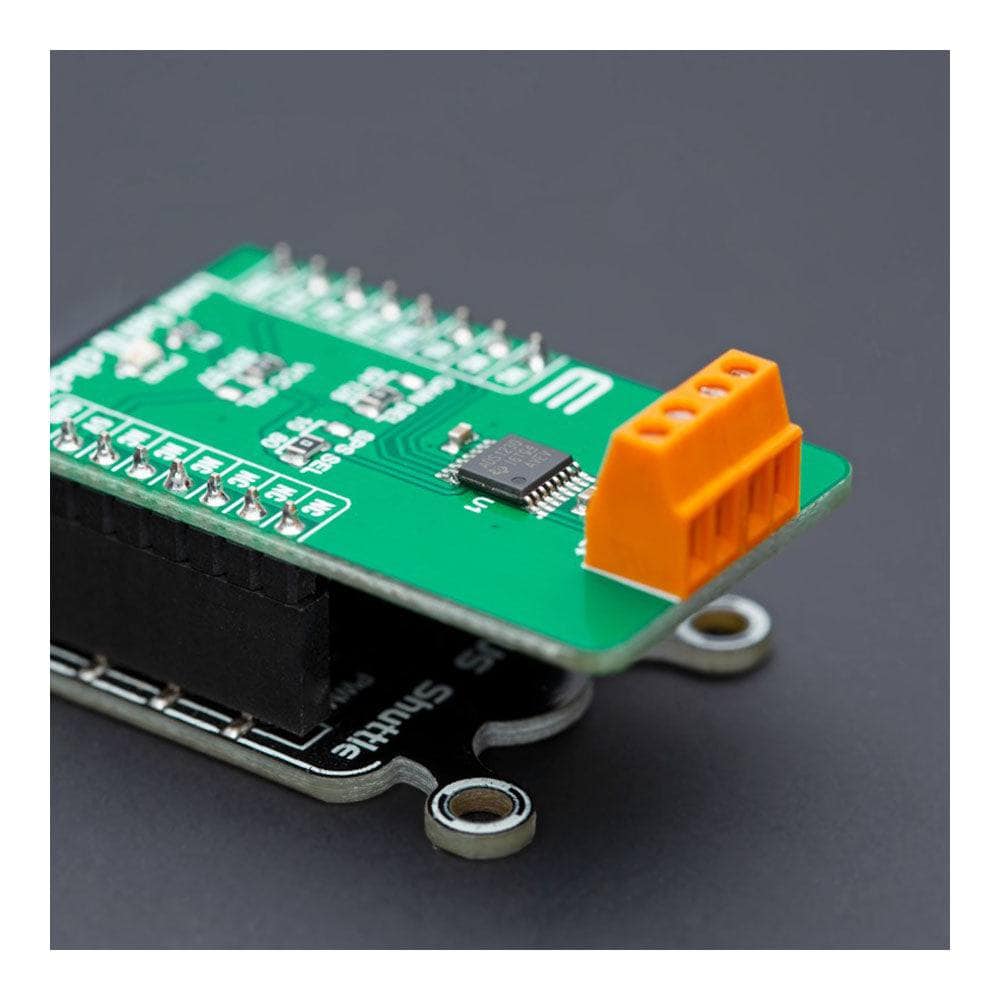
Key Features
Overview
The Load Cell 7 Click Board™ is a compact add-on board representing a weigh scale solution. This board features the ADS1230, a high-precision 20-bit delta-sigma analogue-to-digital converter (ADC) with an outstanding noise performance from Texas Instruments. This SPI-configurable ADC (read-only) offers selectable gain and data rate values, supporting a full-scale differential input of ±39mV/±19.5mV and 10SPS/80SPS, respectively. It comes with an onboard low-noise programmable gain amplifier (PGA) and onboard oscillator providing a complete front-end solution. This Click board™ has many features that make it a perfect fit for bridge sensor applications, including industrial process control, weigh scales, and strain gauges.
The Load Cell 7 Click Board™ is supported by a mikroSDK compliant library, which includes functions that simplify software development. This Click board™ comes as a thoroughly tested product, ready to be used on a system equipped with the mikroBUS™ socket.
Downloads
La carte Click Board™ Load Cell 7 est une carte complémentaire compacte représentant une solution de pesage. Cette carte est équipée de l'ADS1230, un convertisseur analogique-numérique (CAN) delta-sigma 20 bits de haute précision avec des performances de bruit exceptionnelles de Texas Instruments. Ce CAN configurable SPI (lecture seule) offre des valeurs de gain et de débit de données sélectionnables, prenant en charge une entrée différentielle pleine échelle de ±39 mV/±19,5 mV et 10 SPS/80 SPS, respectivement. Il est livré avec un amplificateur de gain programmable à faible bruit (PGA) intégré et un oscillateur intégré offrant une solution frontale complète. Cette carte Click™ présente de nombreuses fonctionnalités qui en font un outil idéal pour les applications de capteurs de pont, notamment le contrôle des processus industriels, les balances et les jauges de contrainte.
La carte Click™ Load Cell 7 est prise en charge par une bibliothèque compatible mikroSDK, qui comprend des fonctions qui simplifient le développement logiciel. Cette carte Click™ est un produit entièrement testé, prêt à être utilisé sur un système équipé du socket mikroBUS™.
| General Information | |
|---|---|
Part Number (SKU) |
MIKROE-5276
|
Manufacturer |
|
| Physical and Mechanical | |
Weight |
0.02 kg
|
| Other | |
Country of Origin |
|
HS Code Customs Tariff code
|
|
EAN |
8606027387982
|
Warranty |
|
Frequently Asked Questions
Have a Question?
Be the first to ask a question about this.

